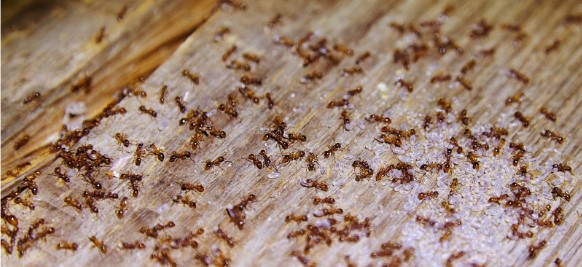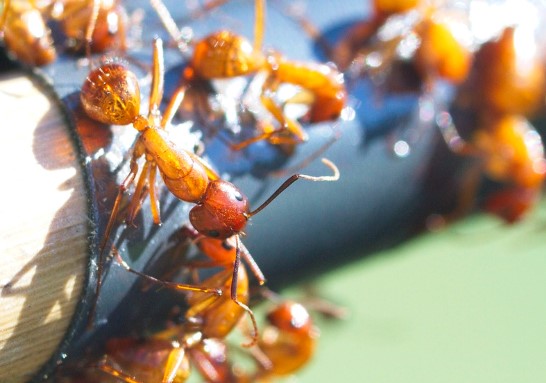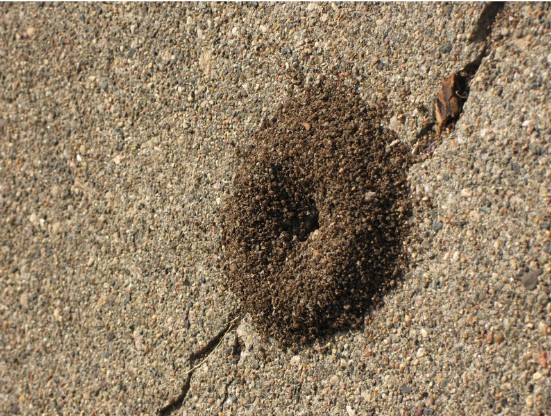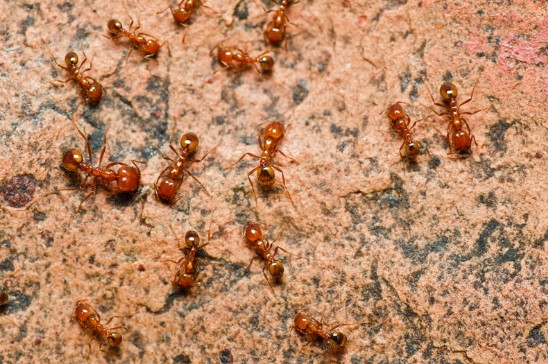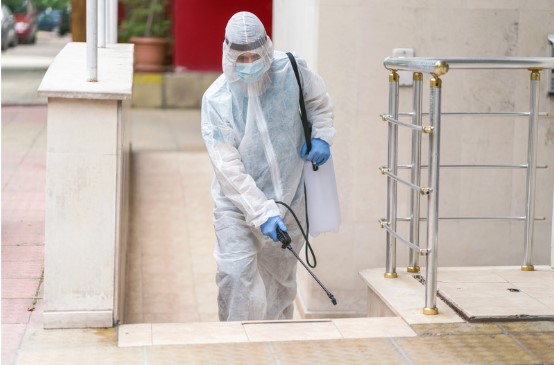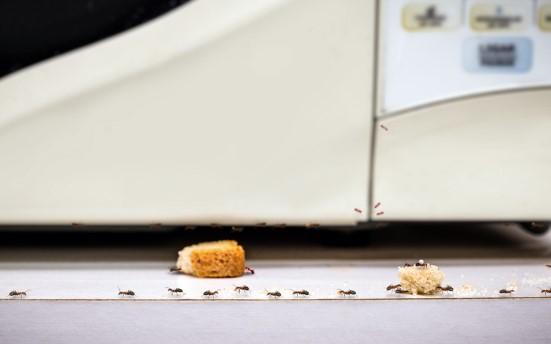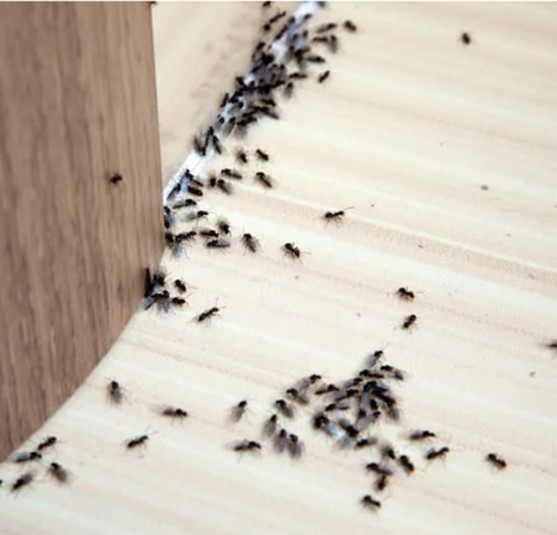
Ants are one of the most prevalent household pests, known for their persistence and ability to infiltrate homes and businesses in search of food and shelter. Understanding the different types of ants and how to control them is essential for maintaining a pest-free environment. This comprehensive guide will provide detailed information about various ant species, their behaviors, and effective strategies for managing and preventing infestations.
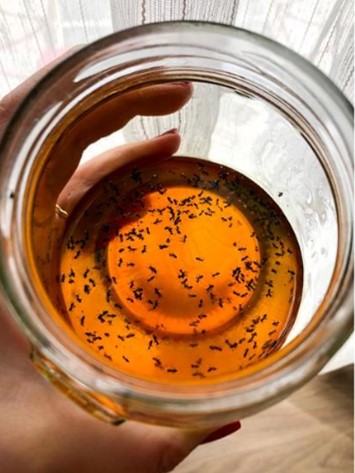
Different ant species have unique characteristics and nesting habits, making it important to identify the type of ant infestation you are dealing with. For instance, carpenter ants are notorious for damaging wooden structures as they build their ant nests, while other ant species might be in search of food. Recognizing the signs of an ant infestation early on can help in implementing the right ant control measures.

To effectively kill ants and get rid of them from your home or business, it’s crucial to locate their nests. This can be challenging as ants often build their nests in hidden or hard-to-reach places. Utilizing ant bait and liquid ant baits can be an effective method for exterminating these pests. These baits attract ants, which then carry the poison back to their nests, effectively reducing the ant population.
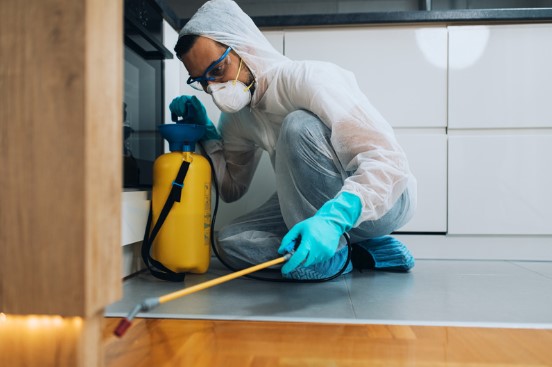
Implementing ant treatments regularly can prevent future infestations. Professional pest control services can offer customized solutions, including targeted ant baits and other ant control methods tailored to your specific needs. Keeping a few ants at bay requires constant vigilance and proactive measures, such as maintaining cleanliness and sealing potential entry points.
Using pest control products designed for ants, such as ant bait stations and sprays, can be particularly effective. These products target the entire colony, not just the visible ants, ensuring a more thorough eradication. Liquid ant baits are especially useful for large infestations, as they can be placed in areas with high ant activity.

By understanding the habits of different ant species and employing the appropriate ant treatments, you can maintain a pest-free environment. Regular inspections and prompt action at the first sign of an ant infestation will help keep these persistent pests under control. Whether dealing with common ants or managing ants inside your home, being aware of their behavior as social insects can aid in effective pest management. Implementing targeted strategies based on the specific ant species will ensure a more successful approach to controlling and preventing infestations.
Worker Ants: The Backbone of the Colony
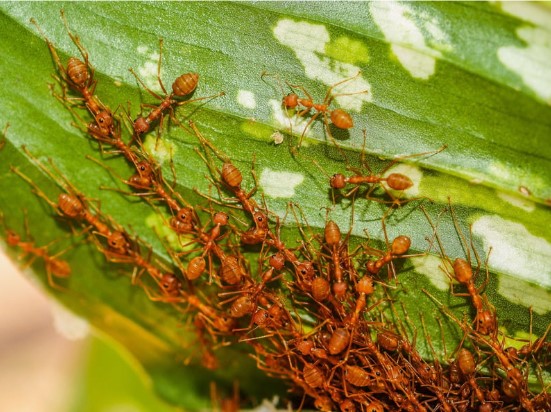
Worker ants are the most commonly seen members of an ant colony. They are responsible for foraging, building and maintaining the nest, and caring for the queen’s offspring. Understanding the role of worker ants can help in devising effective control strategies, as they are the ones most likely to come into contact with baits and treatments.
When these ants find a food source, they bring it back to the ant nest to share with the entire colony, which can include thousands of individuals depending on the ant species. The most common ant species, such as Argentine ants, pavement ants, and odorous house ants, rely heavily on their ants to sustain the colony.

By targeting ants with ant bait, the poison is carried back to the nest and spread throughout the entire colony, including the queen and larvae. This method ensures that the ant colony is affected at its core, leading to more effective eradication. Identifying the type of ant infestation and the nesting habits of the most common ant species is crucial for successful ant control.
Using this knowledge, pest control professionals can devise strategies that exploit ants’ foraging behaviors to introduce treatments into the heart of the ant nest. This approach not only kill ants on contact but also disrupts the colony’s ability to thrive, ultimately eliminating the infestation.
Common Types of Ants
1. Carpenter Ants
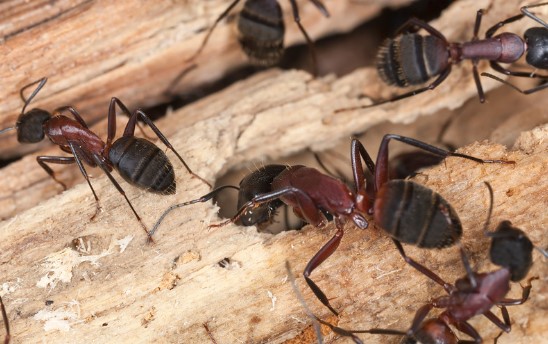
Appearance and Behavior: Carpenter ants are large, ranging from 1/4 to 1/2 inch in length, and are usually black or dark brown. Unlike termites, they do not consume wood but excavate it to create nests, causing structural damage over time. Carpenter ants are often most active at night, foraging for food and moisture.
Habitat: These ants prefer moist, decaying wood and are commonly found in wall voids, attics, and around windows and door frames. They are also attracted to wood that has been softened by water damage, making leaky roofs, pipes, and windows prime targets. Additionally, carpenter ants can infest tree stumps and indoor plants if the wood is decaying or excessively moist.
- Inspection: Identify and repair water leaks to reduce moisture levels. Look for sawdust-like frass near wooden structures, tree stumps, and houseplants, which can indicate carpenter ant activity.
- Exclusion: Seal cracks and openings in your home’s exterior to prevent entry. Ensuring proper ventilation and maintaining the integrity of your home’s exterior, as well as removing or treating infested tree stumps and managing indoor plant moisture, can help deter carpenter ants.
- Baiting: Use carpenter ant bait that attracts foraging workers, leading them to carry the poison back to the nest. This method effectively kills carpenter ants by targeting the entire colony and getting rid of ants from your property.
- Professional Treatment: If the infestation is severe or persistent, contact a pest management professional or ant exterminator for targeted treatments and potential fumigation. A pest control expert can help with comprehensive strategies to address and resolve the ant problem.
2. Fire Ants
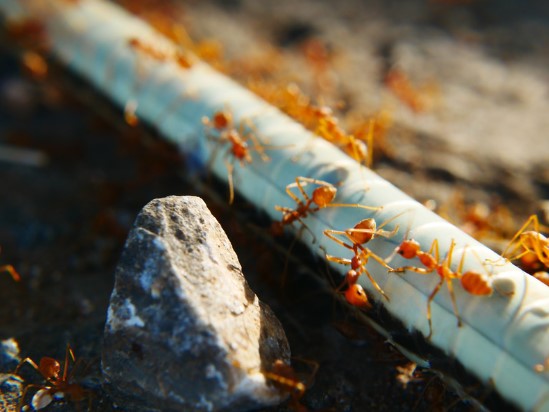
Appearance and Behavior: Fire ants are reddish-brown and measure 1/8 to 3/8 inch in length. They are aggressive and can deliver painful stings that may cause allergic reactions in some people. Fire ants are known for their mound-building behavior and can cause significant damage to lawns and agricultural areas. Their aggressive nature and ability to swarm make them a serious ant control challenge.
Habitat: Fire ants build large mounds in open, sunny areas like lawns, fields, and pastures. They can also enter buildings in search of food and water, particularly during hot, dry periods. These ants are notorious for forming multiple ant colonies, which can lead to a widespread fire ant infestation if not managed promptly.
- Baiting: Use fire ant bait that workers carry back to the colony, killing the queen and the entire nest. This method helps to get rid of ants permanently by targeting the whole ant colony, including the queen.
- Drenching: Apply insecticidal drenches directly to mounds to eliminate colonies quickly. This method can be effective for killing ants and dealing with a fire ant infestation on the surface.
- Professional Treatment: For widespread infestations, experienced pest control services can apply targeted treatments to significantly reduce fire ant populations. These treatments often involve a combination of baiting and drenching to ensure that dead ants and any surviving ants are addressed effectively.
3. Odorous House Ants
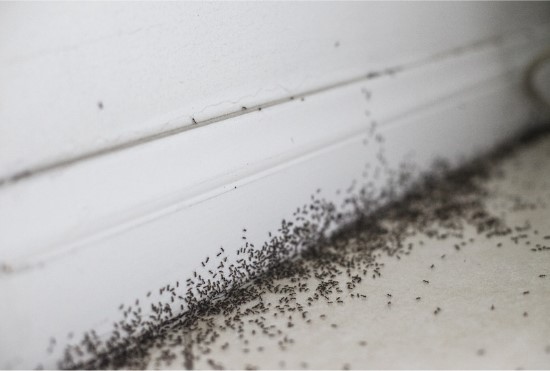
Appearance and Behavior: Odorous house ants are small, about 1/8 inch long, and brown or black. When crushed, they emit a distinctive rotten coconut smell. These ants are attracted to sweet foods and are known for forming large, persistent colonies. Their tendency to forage for food and the ease with which they can invade homes makes them a common pest problem.
Habitat: These ants nest in a variety of locations, including walls, floors, and under appliances. They prefer moist environments and can often be found near sources of water, such as leaky pipes or damp areas.
- Sanitation: Keep your home clean, store food in sealed containers, and promptly clean up spills. Ensuring that food sources are tightly sealed helps remove ants and makes your home less attractive to them. This step is crucial for reducing and getting rid of ants.
- Exclusion: Seal entry points such as cracks and gaps around windows and doors to prevent ants from entering. Maintaining a barrier can help prevent other ants from invading your home.
- Baiting: Use sweet-based ant bait to attract and eliminate colonies. For best results, place granular ant bait along trails and near entry points. The ants carry the bait back to their nests, which helps to kill ants effectively and reduce the ant infestation. This method aids in getting rid of ants by targeting the entire colonies.
4. Argentine Ants

Appearance and Behavior: Argentine ants, small and ranging from light to dark brown, are known for their aggressive nature. They form large colonies and can displace native ant species, often invading homes in large numbers. Their long foraging trails and rapid colony establishment make them a significant pest problem, highlighting the need for immediate action.
Habitat: Argentine ants, with their preference for moist environments and their adaptability to different habitats, are often found in kitchens and bathrooms. They nest in soil but can also establish colonies indoors during unfavorable weather conditions. This adaptability makes them a common nuisance in both residential and commercial settings, underlining the urgency of effective control methods.
- Sanitation: Maintain a clean environment and eliminate moisture sources. Remove food debris and fix leaky pipes to prevent attracting these ants. Ensuring that pet food is properly stored and that food sources are tightly sealed helps in controlling food ants.
- Baiting: Use both protein-based and sweet-based baits to attract and kill ants. Place baits near trails and nests to maximize their effectiveness. By targeting the colonies, baiting helps repel ants and reduce the infestation.
- Professional Treatment: Large infestations may require professional pest control services, including perimeter treatments and barrier applications, for effective management. For extensive problems, more than DIY ant control methods might be necessary so that professional intervention can provide more comprehensive solutions to get rid of ants.
5. Pavement Ants
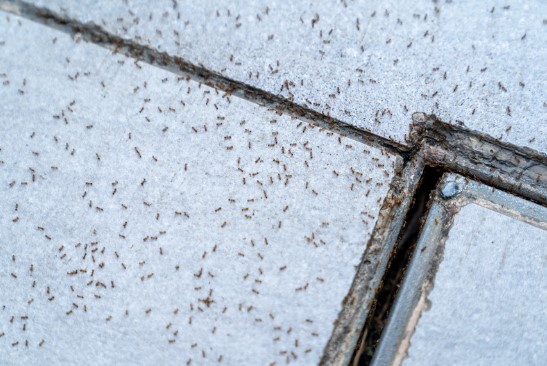
Appearance and Behavior: Pavement ants are small, about 1/8 inch long, and range from brown to black. They often build nests under sidewalks, driveways, and building foundations, creating visible soil mounds along cracks. Their foraging habits can lead them to invade homes in search of food, making them a common household pest.
Habitat: Pavement ants prefer to nest in cracks in pavement and concrete slabs, as well as under stones and debris. Their preference for these environments makes them especially troublesome in areas with paved surfaces. They can also invade homes, particularly when searching for food.
- Baiting: To attract and eliminate colonies, use ant bait near trails and entry points. For maximum effectiveness, place baits both indoors and outdoors. This method helps get rid of ants by targeting the entire ant colony, including those hidden in pavement cracks.
- Sealing: Seal cracks and gaps in pavement and foundations to prevent entry. Proper sealing can help prevent ants and other pests from invading your home.
- Professional Treatment: Persistent infestations may require professional pest control intervention. This can include crack and crevice treatments, barrier applications, and the use of natural insect repellents. A pest control expert can also address issues with red imported fire ants or other ant species, providing a comprehensive solution to manage and get rid of ants effectively.
6. Pharaoh Ants
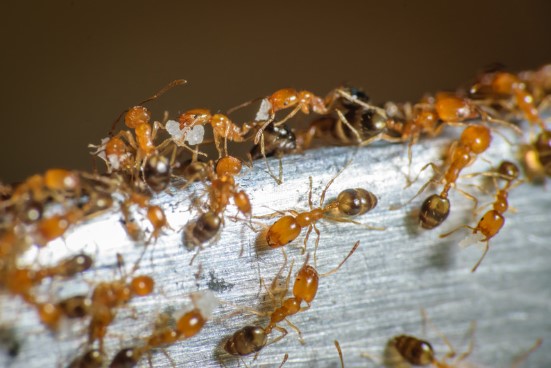
Appearance and Behavior: Pharaoh ants are tiny, about 1/16 inch long, and range from light yellow to red. They are notorious for their ability to establish colonies quickly and can spread throughout buildings, making them particularly problematic in hospitals and food establishments. Their small size and rapid colony growth contribute to their ability to invade and persist in various environments.
Habitat: Pharaoh ants, with their preference for warm, humid environments, are commonly found in kitchens, bathrooms, and hospitals. Their tendency to nest in inaccessible areas such as wall voids and under floors makes them a challenging pest to detect and control. This complexity underscores the need for a comprehensive pest control strategy.
- Baiting: Use baits that target both protein and sugar-feeding preferences of ants. Place baits along trails and near nesting sites to attract and eliminate the ants. This method helps to follow the ants’ scent trail back to their colonies, ensuring effective ant treatment and helping to get rid of ants.
- Exclusion: Seal entry points and maintain cleanliness to reduce attractants. Proper sanitation can prevent Pharaoh ants and other pests from entering your home or establishment.
- Professional Treatment: Given the rapid colony establishment and the difficulty in accessing their nests, experienced pest management professionals are often necessary to control Pharaoh ants effectively. This can include thorough inspections, targeted baiting programs, and the use of residual insecticide treatments. Professional ant exterminators can effectively address persistent infestations and provide comprehensive pest control solutions, underscoring the importance of expert intervention to get rid of ants.
General Ant Control Strategies
1. Inspection and Identification
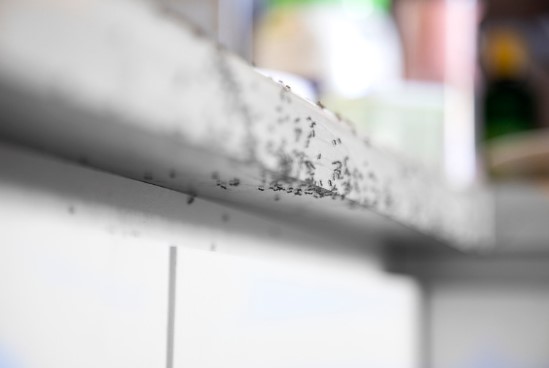
Properly identifying the type of ant infestation is crucial for effective control. Inspect your home to locate nests, trails, and entry points. Different ants require different treatments, so accurate identification is the first step. Look for signs such as frass, soil mounds, and foraging trails to determine the type of ant and the extent of the infestation.
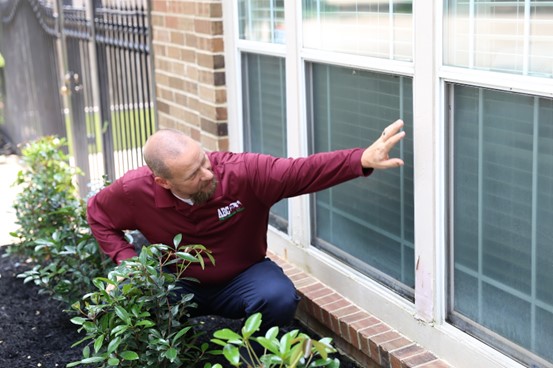
Once the type of ant is identified, select the appropriate ant treatment. Options include using ant poison or natural insect repellent, depending on the infestation and your preferences. An ant exterminator can provide professional help for severe infestations. Additionally, repelling ants and targeting their specific behaviors can enhance the effectiveness of your pest control efforts, helping you to get rid of ants effectively.
2. Sanitation

Maintain a clean home to reduce attractants for ants. This includes:
- Storing Food Properly: Keep Food in sealed containers and avoid leaving It out overnight. Proper storage prevents the attraction of ants, such as carpenter ants and argentine ants, which are drawn to food sources.
- Cleaning Regularly: Clean countertops, floors, and other surfaces regularly to remove food debris. This helps eliminate the ant’s scent trail, which attracts social insects and prevents ants inside from congregating.
- Proper Waste Management: Take out the trash frequently and use sealed bins to prevent access to food scraps. Proper waste management can help control ant infestations by removing potential food sources.
- Eliminating Moisture: Fix leaky pipes and reduce moisture levels to deter ants that are attracted to water sources. Reducing moisture helps to minimize the appeal of your home to ants, including those drawn to damp environments.
- Using Natural Remedies: Consider using natural insect repellents like tea tree oil, which can help in repelling ants. These remedies can be part of your ant treatment strategy to get rid of ants effectively.
3. Exclusion
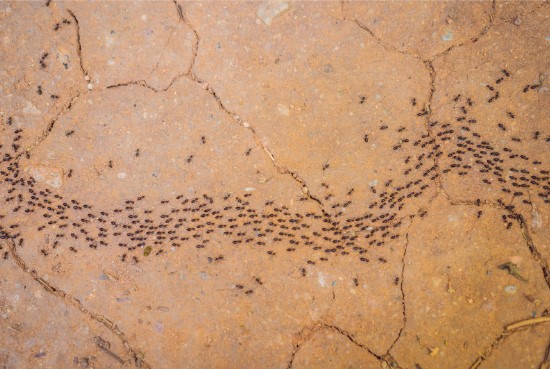
Seal cracks, crevices, and entry points around windows, doors, and your home’s foundation. Use weather stripping, caulk, and door sweeps to create barriers against ants. This prevents common household ants from entering and reduces the chance that ants will congregate inside your home. Additionally, trim trees and bushes away from your home’s exterior to minimize access points and discourage ants from coming close.
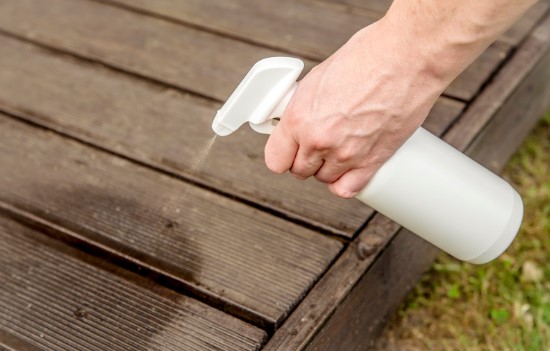
For added protection, use non repellent insecticide to target ants without deterring them from contact with the treatment. You can also use ant killer products like boric acid, which is effective against various ant species. Applying ant bait with attractive substances such as maple syrup can lure ants and help control infestations. For cleaning, use glass cleaning spray to maintain cleanliness around entry points, making your home less inviting to ants and more difficult for them to enter.
4. Baiting
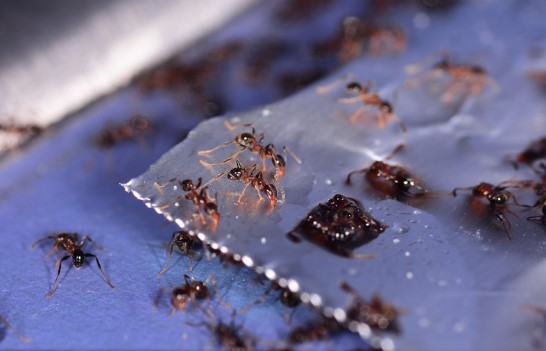
Ant baits are an effective way to eliminate colonies—place baits along ant trails and near entry points. The foraging ants will carry the bait back to the nest, eventually killing the entire colony. Use baits that target the specific dietary preferences of the ants you are dealing with, whether it be protein, sugar, or grease.
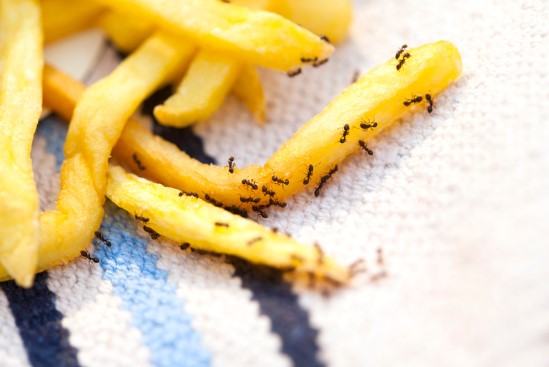
To prevent ants from congregating inside, ensure that Food is tightly sealed and remove any attractants. Regularly inspect and maintain your home to ensure common ants find easy access points. If you encounter persistent problems or large infestations, consulting a pest management professional can provide targeted solutions. Proper use of ant bait, along with these preventative measures, can help effectively manage and reduce ant populations inside and around your home.
5. Chemical Treatments
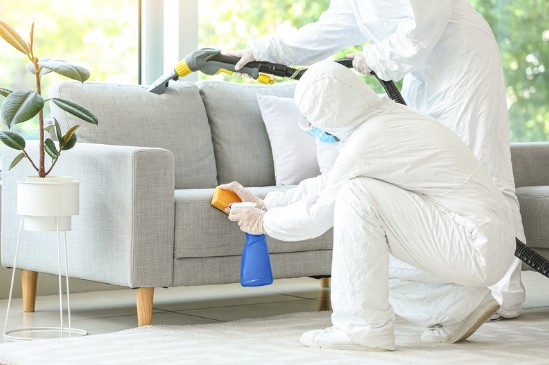
Insecticidal sprays, dusts, and granules can be used for targeted treatments. However, it’s important to use these products safely and according to the manufacturer’s instructions. Residual insecticides, including non-repellent insecticides, can provide long-term control by creating barriers that ants, such as house ant, must cross, ultimately helping to get rid of ants permanently.

Professional pest control services may be necessary for extensive infestations. These services can address issues more effectively than DIY pest control methods alone. When using products like boric acid or bait toxicants, follow safety guidelines to avoid inadvertently attracting ants. Proper application of these treatments, combined with preventative measures, can help prevent ants and reduce the likelihood of future infestations.
6. Professional Pest Control

If your ant problem persists despite your efforts, it may be time to call in the professionals. Pest control experts can provide thorough inspections, identify the type of ants, and implement effective treatment plans tailored to your specific situation. They have access to specialized products and techniques that are not available to the general public, such as advanced bait toxicants and non repellent insecticides.
Professionals can address ant hills and implement strategies that target how ants congregate and interact with their environment. They use these specialized treatments to break the ant colonies’ lifecycle and reduce the likelihood that ants will be attracted to your home again. By leveraging their expertise, you can effectively manage and eliminate persistent ant infestations.
Preventing Ant Infestation
1. Regular Maintenance
Perform regular maintenance around your home to prevent ant infestations. This includes:
- Yard Maintenance: Trim trees and bushes away from your home and remove debris and leaf litter from around the foundation.
- Firewood Storage: Store firewood and other materials away from your home to reduce potential nesting sites.
- Regular Inspections: Conduct regular inspections of your home’s exterior and interior to identify and address potential entry points and nesting sites.
2. Monitoring
Keep an eye out for signs of ants, such as trails, nests, and activity around food sources. Early detection is crucial for ant control, as it can help get rid of ants before a small problem becomes a large infestation. Monitoring stations and sticky traps are useful tools to track ant activity and identify problem areas. By staying vigilant and proactive, you can manage the presence of a few ants and prevent other ants from establishing a more significant infestation.
3. Education
Educate yourself and your family about the importance of maintaining cleanliness and promptly addressing any signs of ant activity. Awareness is key to get rid of ants and preventing and controlling infestations. Encourage good habits such as cleaning up after meals, storing food properly, and reporting any signs of ants immediately.
Ant Control in Different Environments
1. Residential Properties
Ant infestations in homes can be particularly bothersome as ants search for food and water. Implementing proper sanitation, exclusion, and baiting techniques can help get rid of ants and manage residential ant problems. Regularly inspect areas where ants are likely to enter, such as kitchens, bathrooms, and basements.
2. Commercial Properties
Ants can pose a significant problem in commercial settings, particularly in food establishments and healthcare facilities. Strict sanitation protocols, regular inspections, and professional pest control services are essential for managing ant infestations in these environments. Ensure that all employees are trained in proper food handling and sanitation practices to reduce the risk of attracting ants.
3. Outdoor Spaces
Ants can also be a nuisance in outdoor spaces such as gardens, patios, and lawns. Maintaining a tidy yard, using granular ant baits, and applying appropriate treatments can help ant control outdoor ant populations. Consider using natural deterrents such as diatomaceous earth or essential oils to create barriers around garden beds and outdoor seating areas.
Natural Ant Control Methods
1. Diatomaceous Earth
Diatomaceous earth is a natural powder made from fossilized algae. It is safe for humans and pets but lethal to ants. Sprinkle it around entry points, nests, and trails to eliminate ants. The powder works by damaging the ants’ exoskeletons, causing them to dehydrate and die.
2. Essential Oils

Essential oils such as peppermint, tea tree, and citrus oils can repel ants. Mix a few drops with water and spray it around entry points and areas where ants are active. The strong scents of these oils disrupt the ants’ pheromone trails, making it difficult for them to navigate and communicate.
3. Vinegar
A solution of vinegar and water can be used to clean surfaces and disrupt ant trails. The strong smell of vinegar masks the ants’ pheromone trails, preventing them from finding their way back to their food source. Use a 50/50 mixture of vinegar and water to wipe down countertops, floors, and other surfaces.
4. Borax and Sugar

Mix borax and sugar to create a homemade ant bait. Place the mixture in shallow containers near ant trails. The sugar attracts ants, while the borax acts as a poison, ultimately killing the colony. This method can effectively get rid of ant problems by targeting the ants directly. However, be cautious when using borax, as it can be harmful to pets and children if ingested. To prevent attracting ants and ensure the bait is effective, keep food tightly sealed and clean up spills promptly.
5. Lemon Juice
Lemon juice is another natural deterrent for ants. Its acidic properties disrupt the ants’ scent trails and effectively repel these pests. Apply lemon juice to entry points and areas where ants are active to help control and kills ants. You can also place lemon peels near potential entry points to further deter ants and prevent them from being attracted to your home. This simple, natural solution can be an effective part of your overall strategy to manage and reduce ant infestations.
Conclusion
Understanding the different types of ants and how to control them is essential for maintaining a pest-free environment. Each species has unique behaviors and preferences, requiring targeted control methods. By implementing proper sanitation, exclusion, and baiting techniques, you can effectively manage and prevent ant infestations in your home or business.
Regular maintenance, monitoring, and professional pest control services, including the use of ant exterminators, can further ensure long-term success in keeping ants at bay. Whether dealing with carpenter ants, fire ants, or house ants, a comprehensive approach to ant control will help protect your property and provide peace of mind.
By being proactive and vigilant, you can prevent a few ants from developing into major infestations. Address moisture issues, maintain cleanliness, and use appropriate baits and treatments, such as bait toxicants and non repellent insecticides, to get rid of ants effectively. Ensure Food is tightly sealed to avoid attracting ants and employ strategies that kill ants and repel other ants from entering your space. With the right knowledge and strategy, you can keep your home or business free from the persistent nuisance of ants and manage common ants effectively.
